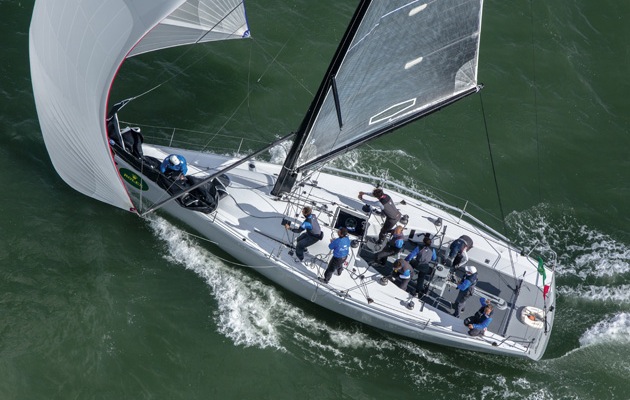To help minimise your losses you need to sail your boat to its target boat speeds. Jonty Sherwill asked designer Mark Mills for his tips on polar diagrams
Sails are fresh, the bottom is clean, there’s a good crew, but you’ve been losing out to similar boats on the downwind legs. The helmsman is sailing as close as possible to the target speeds displayed so why is it not doing the trick?
But who sets these target boat speeds and why do you sometimes fail to match them and at other times do so much better? Most of us are familiar with polar diagrams showing a boat’s potential speed on each point of sailing, but how do you put this information to good use?
For those who sail dayboats or small cruiser-racers without a log or wind instruments, judging speed and sailing angles is largely intuitive, as you observe the progress of other boats around you. An electronic compass and depth sounder may be as high-tech as it gets.
Although this ‘seat-of-the-pants’ ability remains an essential part of sailing larger yachts, the information made available by more advanced electronics provides a far better understanding of how the conditions are affecting performance.
Even if the boat has top-of-the-range instruments and came with a set of polars from the designer or an ORC rating certificate this will be just a starting point. Some budget electronics packages won’t provide target boat speeds from within the software, but this doesn’t prevent you developing your own data.
Either way it seems there’s no quick fix and if someone’s bragging how they always sail faster than their targets, good sailing may be part of it, but it’s just as likely to be that the instruments need calibrating and time should be spent developing the polars.
2. Calibration is king
There is no point in having targets if your boat speed is inaccurate. Good instrument calibration is vital, a daily task on top-level raceboats where crew are looking to get within +/– two per cent accuracy.
It’s unlikely many club level racers get consistently close to this target without regular calibration checks, yet what would people say to a designer claiming targets not even accurate to +/–2%?
The calculations that even the most basic system carries out rely on inputs from the log, compass and masthead wind sensor so the calibrations for each should be checked at least at the start of each season and probably more often.
2. Don’t believe the VPPs
Basic parametric VPPs (velocity prediction programs) often used to generate target boat speeds or ORC handicaps are not particularly accurate when compared with programs used for grand-prix boats using CFD (computational fluid dynamics) to simulate the flow of water around the hull. They may be under-predicting, so don’t be satisfied just because you are ‘sailing to targets’.
Also be very sceptical of comparing new models based solely on targets; you have no guarantee that they reflect the actual boat being considered.
3. Theory to reality
Even if very high-quality, a set of polars can only reflect the computer model they started with, and express it in a set of targets unique to that boat. A different displacement, sailplan, alloy or carbon rig, shallow or deep keel type, or crew weight, will lead to more or less different results.
If the targets weren’t created for your boat and configuration don’t expect too much from them, though they may be a good starting point. Output varies from program to program, and remember they aren’t set in stone, so amend your targets.
4. Good sailing
Even the best polars and instruments cannot substitute for natural sailing ability and, by getting to know your boat, you can build an invaluable guide for the helmsman and trimmers just from your own data.

Having good targets on a laminated sheet in the cockpit can put you in better shape than many more expensively equipped boats. However, eyes out on the racecourse and the competition is often more valuable than eyes down on the instruments.
5. Build your own polar diagram
Either start with targets for something similar or note your own performance expectations based on experience (eg, ‘7.2 upwind in 18kn is about right’) and then start paying attention and updating those numbers as you learn what works better – that’s what the pros are doing.
To establish a basic set of polars for your boat there are tablet apps (eg, iPolar) that can provide a starting point and, by noting actual performance from the log (boat speed, not GPS), a pretty accurate set of targets can be developed during the season for a range of wind conditions and sea state.
Mark Mills is a designer well known for winning designs such as Mariners Cove, Tiamat, Alegre, and production designs such as the King 40 and DK 46. Originally from California, Mills studied yacht design at the Southampton Institute, before launching his first design, Aztec, in 1996. Now based in Ireland, he was named 2009 Irish Sailor of the Year for ‘exceptional achievements’.




